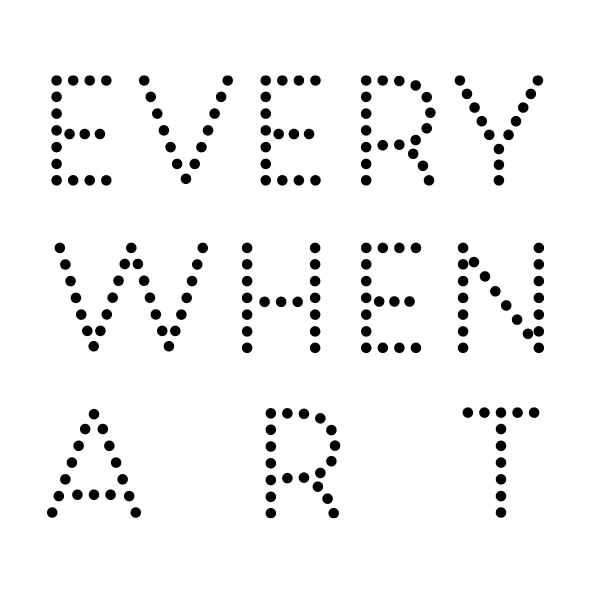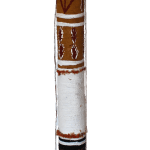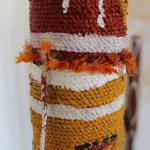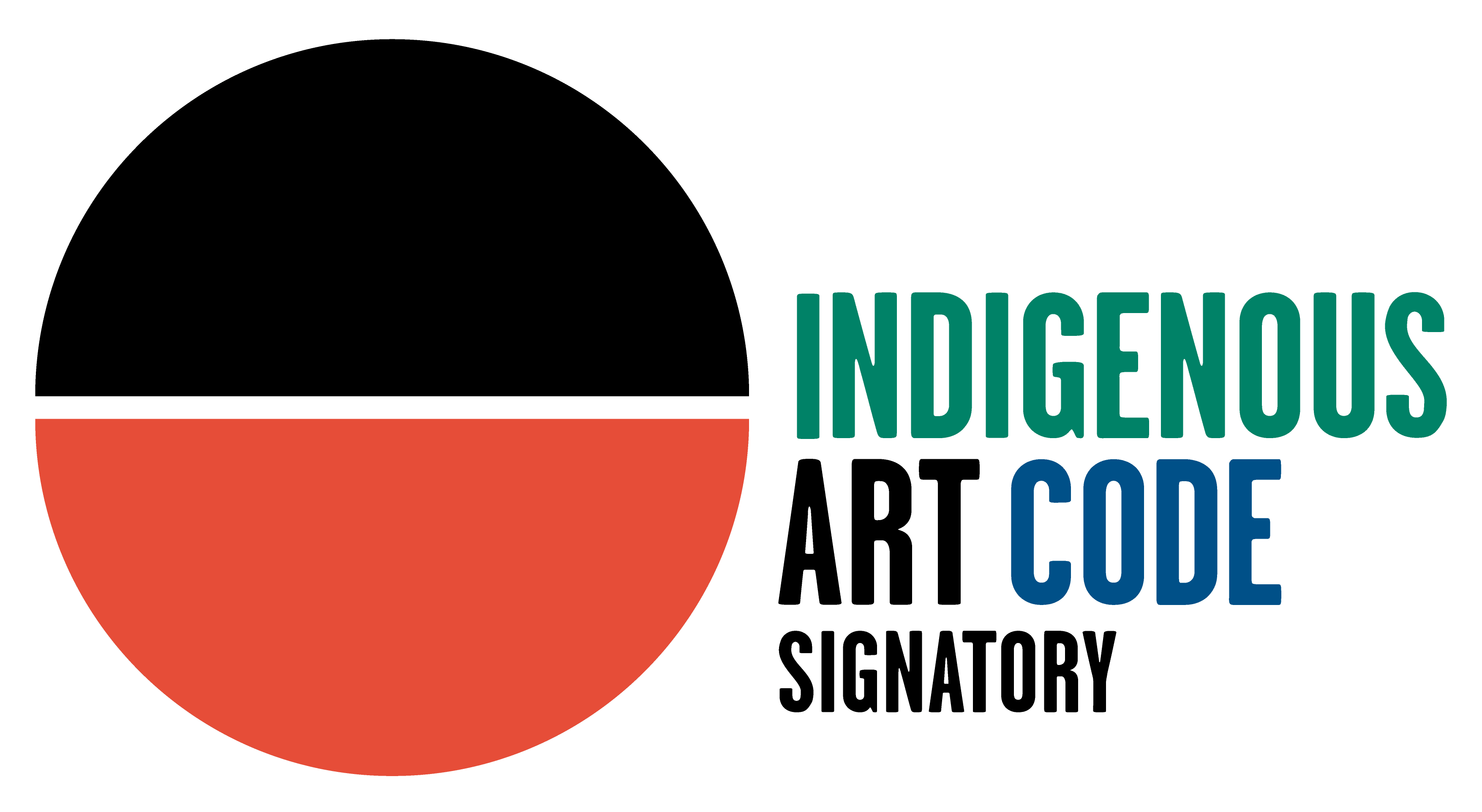Jack Nawilil Rembarrnga, Mayali, b. 1/1/1945
63 x 2 x 2 in
Further images
Transcription of text by Jack Nawilil about two ceremonial objects— Karlanj and Ngalkodjek. Transcribed by Murray Garde and Margaret Carew 2 & 5 December 2017. Notes by Margaret Carew on 5 Dec 2017
Note: The site Jack refers to as Koenoedjangka is in the Rembarrnga language. The ‘oe’ vowel sounds like the ‘ur’ in English ‘fur’. As this vowel does not exist in neighbouring languages, it is usually converted to an ‘i’ as Kinidjangka by Kuninjku and Burarra speakers. I have used that spelling also in the English translation but retained Koenoedjangka in the transcription of Jack’s speech. Jack’s speech involves code switching amongst Kriol, Kune, Burarra and English.
This one here, like ngaye ngakurrmeng, im my draw.
This one here [ceremonial objects], I have drawn my own personal designs on them.
This one Ngalkodjek.
This one (is called) Ngalkodjek.
(MG- note, that this is not the subsection term Ngalkodjok, rather the stem - kodjek is formative in the verb -kodjekmang ‘to abduct’ and may refer to a secret episode in the Nakorrkko story, the father and son cultural heroes for Bininj in western Arnhem Land).
Daluk, im from Elcho im bin travellng, im from Elcho, gama ngarla, jiny-bona didjan na, and didjan du.
This represents a woman, she travelled (here) from Elcho Island, she is from Elcho, she was a woman indeed, she
went/travelled, this one and this one too.
Didjan najawan, didjan na.
This is another one however, this one.
Shemaiah: Those two are the same story?
Same story this mob but I'll bringim next week. I'll bring another one.
This one here, an-nerranga, an-guna balaji, mun-anngiya langa djolworra kantri, im from gun-anngiya, im from like im
This one here, this is a different one and represents a food plant, what's its name (that tucker), it is from the saltwater country, from this way, like, it’s from what's that place
(MC comment: -anngiya is a 'what's its name' word, that inflects for noun class.)
In my country where that Koenidjangka way. Didjan na.
In my country there at Kinidjangka. This one here.
Yo an-guna. Yo Murray, Murray im save, marn.gi.
This one. Murray knows about this.
Yo, Murray ngudda yibengkan ngayi ngarduk nani Murray. From Koenidjangka ngamarnbom.
Murray you know this one, it’s my design Murray. I made it, the one from Kinidjangka.
En nani Koenidjangka ngamarnbom, en nani kuluban kayo kure Nakorrkko wam. Nani ngamarnbom.
Ungke nane ngamarnbom that story ngarduk na. Ngakurrmeng ngaye. Ngudda yibengkan. Kanmarnebengkan
Bulanj. Yoh.
This one I made it, the design from Kinidjangka, the place where flying foxes live where the Nakorrkko passed through. I made that. I’ve made that story for you, that one of mine. I have put it there. You know that. You know what I’m talking about Bulanj (to Murray Garde).
Didjan, nane, dijan gama i bin travelling garra didjei, garra didjei.
This one here, she is a woman who travelled this way, coming this way (to the west from north-east Arnhem Land).
Im gona garra ebrijing. From Kunidjangka i bin make it. From Koenidjangka ngamarnbom en nani Koenidjangka ngamarnbom. En dijan Koenidjangka ngamarnbom. Nane now.
She has many things. I made it, the one from Kinidjangka. From Kinidjangka I made it. It is from Kinidjangka, this thing i have made. That’s it now.
Ngarduk my draw nane. Like ngamarnbun, like im nomo marrek ba morning star, im different nani. ngardapa ngardapa ngarla dreaming. Mu-gurrmurra, yo a-gurrmurra a-bona. Wangarr ngarla.
This design belongs to me. Like, I made it, and it should not be confused with a morning star pole, no, it is something different. they are separate indeed, these dreamings. It (an ancestral spirit) put it there. It is my totemic emblem. It is my ancestral design of the ancestral beings, indeed.







